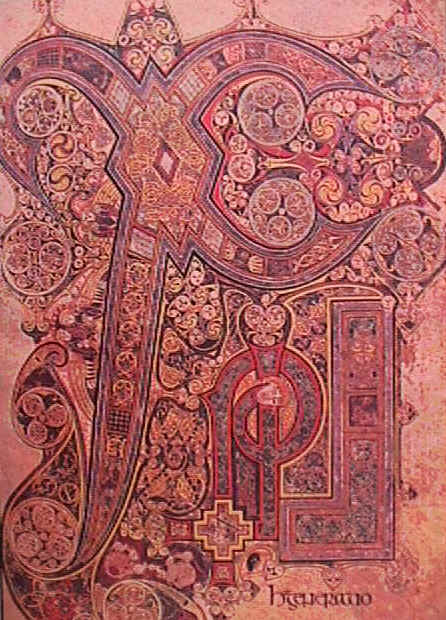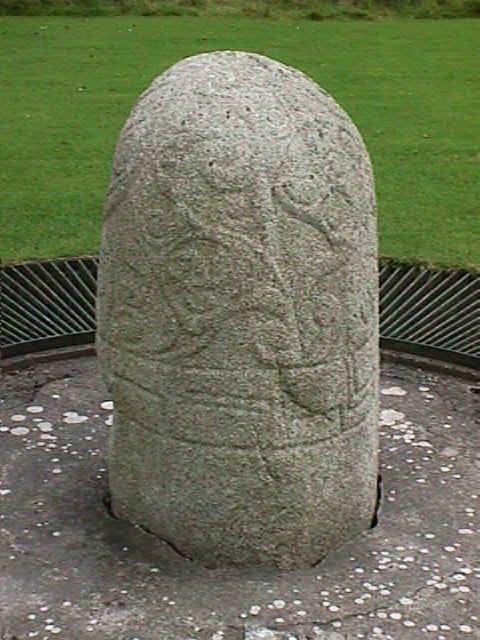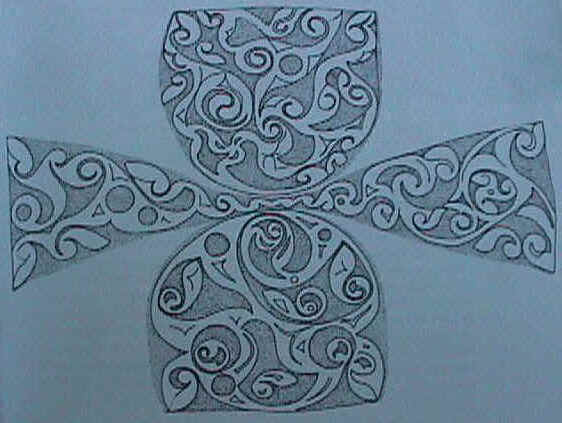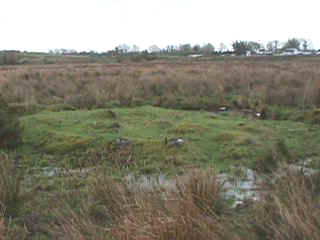JOURNEY INTO THE DEPTHS OF MANKIND'S PASTFor people who are interested in pre-Christian Celtic art, or indeed in art of any kind, this decorated stone (photograph below) is undoubtedly one of the most interesting items they are ever likely to see: regardless of where they go to in the world.In contrast to their Greek and Roman contemporaries the pre-Christian Celtic communities appear to have had a negative attitude towards reading and writing, and may have even banned their use (except perhaps for a very small number of their druids). It looks as though they preferred a simpler set of symbols for expressing concepts (rather than words), and instead of using paper they apparently also had a preference for much more durable materials such as metal and stone.After a relatively short period, the once great and by comparison heavily centralised and bureaucratic Greek and Roman Empires fell by the wayside (as living political entities). The ancient "Celtic Empire" on the other hand has managed to maintain a living presence in the world for much longer.Thanks mostly perhaps to the protection of the seas around the Island of Ireland, the Roman armies do not seem to have troubled the Irish Celts very much. Elsewhere in Europe, the Romans (together with one or two other groups) eventually destroyed most of the Celtic communities. Only a tiny portion of the large area of European territory once controlled by the ancient Celts remains intact as a modern third millennium political entity. Though small, it nevertheless demonstrates the ability of the Celts to survive in the longer term: in spite of (or possibly because of) their relatively haphazard ways, and their sometimes reckless and unpredictable behaviour. People such as Caesar and Cicero were often puzzled by the behaviour of the Celts, and sometimes angered as well. Basically, it seems the ancient Celts refused to be "domesticated" by the Romans (or by anybody else). Many feel the accounts of the Celts by people such as Caesar and Cicero were very biased: because of their need to justify what the Romans were doing to the Celts. As the Celts of the time apparently did not write anything about themselves, nobody knows their version of events. While some Celtic peoples outside of Ireland survived the wars with the Roman armies, these groups seem to have been mostly absorbed by much larger political entities. Although many of the Irish Celts were also killed and/or dispossessed as a result of the Anglo Norman Invasion of Ireland several centuries later (in the 1100's), some of those who survived appear to have been exceptionally resilient to non Celtic ways. At great expense to some, and after a protracted and bloody struggle covering a span of 25 generations or so, the Republic of Ireland eventually (and uniquely) managed to re-establish itself as a Celtic nation-state in the early 1900's. It continues to be the only fully independent Celtic nation-state in the world. In certain parts of rural Ireland the Irish language is still some people's first language - the same language that Cicero warned the Romans to beware of in 69 B.C. when he stated: "Look at them, cheerful and arrogant, pouring into the Forum with a threat on their lips, trying to frighten us with the noise of their barbaric language". And a little earlier Cicero claimed: "These are the very people who once went to Pythian Apollo at Delphi, so far away from their homelands, in order to desecrate and plunder the whole world's oracle." This last comment is very interesting because the Turoe Stone is similar to the Delphic Omphalos Stone (located on the southern slopes of Mount Parnassus), which marked the centre of the ancient Greek world; and this point leads directly to the view that at some period in history the Turoe Stone marked the centre of the Celtic world. Not only did the Irish "cell" of the Celtic culture survive the so called "Dark Ages", it even managed to produce some of the world's greatest works of art during that otherwise dull period in Europe for artistic achievement.Mostly as a result of the influence of St. Patrick it seems, the Celts were first convinced of the benefits of pen and ink in the fifth century A.D.. This was just around the time when the great classical libraries on mainland Europe were being looted and wrecked, and (in effect) being destroyed forever by people hostile or indifferent to what Rome represented to them. Simultaneously, the newly trained group of Celtic scribes set about copying everything they could lay their hands on (both pagan and Christian). Material copied included items such as the works of Homer and Aristotle - items which might otherwise have been lost for the rest of time.In terms of world history, the copies of the
books produced by the early Celtic scribes turned out to be of extreme significance:
because, a generation or so later, Celtic monks set off from Ireland and successfully
relaunched Western civilisation in Scotland, England, and mainland Europe - by founding a
network of monasteries in places such as Iona, York, Paris, Rome, Cologne, Vienna, and
several other such places.
Page from The Book Of Kells The above page, which contains examples of
almost all the varieties of design found in Celtic art, is considered by many to be the
most elaborate and most magnificent specimen of calligraphy ever produced. It represents
the opening words of Saint Matthew's Gospel: In amongst this amazing display of technical brilliance, an interesting (and unexpected) piece of symbolism can be seen to the left and a little above the Latin text at the bottom of the above page: two rats compete for a crust of bread - while two "fat cats" sit back and watch. Much of the symbolism used in pre-Christian Celtic stone art is of simple design. Straightforward spirals were frequently used. Often they appear in a group of three: possibly symbolic of the physical, mental, and spiritual development of a human life winding its way through the rotating seasons of its years - on its limited and relatively short journey from birth to death. For the ancient Celts the number three appears to have had great significance, and it never seems to have been very far from the minds of their artists.
NEWGRANGE It appears also that the changing seasons (and their associated cycles of degeneration and regeneration) were greatly revered and very carefully monitored by the ancient Celts. For example, the great passage-tomb at Newgrange, County Meath (which is now thought to have been built around 3100 BC - making it one of the oldest buildings in the world), seems to have been very skilfully constructed in such a way that on the morning of December 21st of each year (the winter solstice), a pencil-thin shaft of light penetrates the chamber for approximately 17 minutes: symbolic some think of the womb-like compartment being impregnated by the sun - so as to arouse the fertility of the soil, and thus begin the new cycle of annual regeneration.A few miles from the Turoe Stone there is what appears to be a very ancient burial complex on a hill called "Grange". At the bottom of one of its slopes there is a raised piece of ground of several acres, with a river in between. It is tempting to speculate that this just might have been the "Old" Grange? (The English word "Grange" comes from the Irish word "Gráinseach"- and indicates a place of importance with a good view: which the local Grange does have.)It appears that in the case of the Turoe Stone the pre-Christian Celts raised the strength, sophistication, and complexity of their spiritual abstractions and symbolism to the highest level that they ever used in their stone art; and, in so doing, they may (in a way similar to the later situation regarding the Book of Kells), have given to the world one of the finest examples of abstract stone art ever produced. Of all the decorated stones created by the pre-Christian Celts, the Turoe Stone is by far the best known in the world.
|
VISITOR |
NUMBER |




